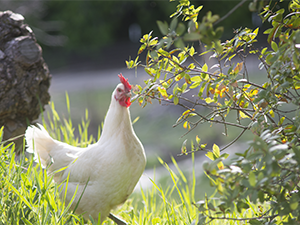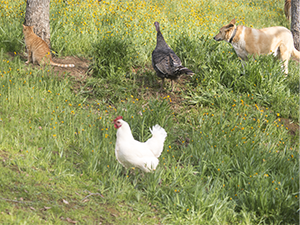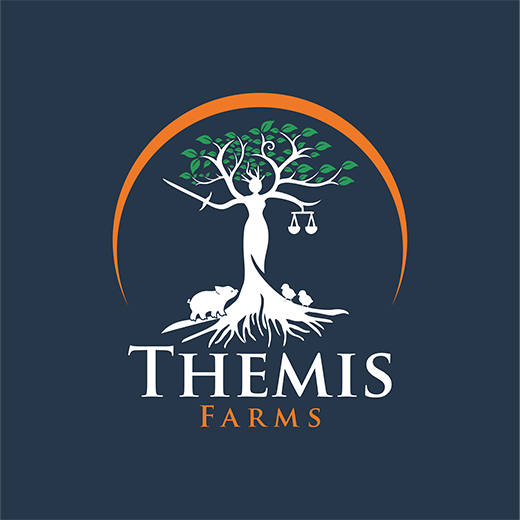

Foragers Paradise in the Foothills of the Sierra Nevadas
Since we acquired our Bresse chicks last year, we learned the French take the raising of these heritage breeds very seriously. France’s Ministry of Agriculture and Food produced an official bulletin in 2019, setting forth the specifications for the designation of the “Poulet de Bresse” — the Bresse chicken.
The bulletin explains the specific external characteristics for the Bresse. I’ll cover these in later blog posts, after we begin line-breeding (genealogical selection) our Bresse flock.
The Bresse originated in the former Bresse province, located in the regions of Auvergne-Rhône-Alpes and Bourgogne-Franche-Comté in eastern France.
Like California, the Auvergne-Rhône-Alpes region is described as a collection of areas of diverse topographies, climates, and natural resources. Bourgogne-Franche-Comté is endowed with a great diversity of landscapes and unspoiled nature, including lakes and mountains. We’re in the foothills of the Sierra Nevadas, at a comfortable 2500 feet, and share many similarities with the Bresse region.
According to the French Ministry, in keeping with local, loyal, and constant practice, Bresse poultry must be reared on grassy ranges after a maximum of 35 days. We are beyond that for our small starter flock, but we’re raising them for breeding. Nevertheless, we always intended for our Bresse chickens to spend their days on grassy ranges.
Challenges …
The first was predators. While there aren’t many predators during the day, it’s not 100% safe. That’s why we have dogs. However, our dogs needed to get used to the chickens. And our new addition, Bruno, needed to be trained to not hunt them.
This week was our first try letting our whole flock out of their fenced pasture and onto our entire parcel (fenced only around the perimeter). They had a lot of fun foraging around our grassy hills. A successful project launch!
